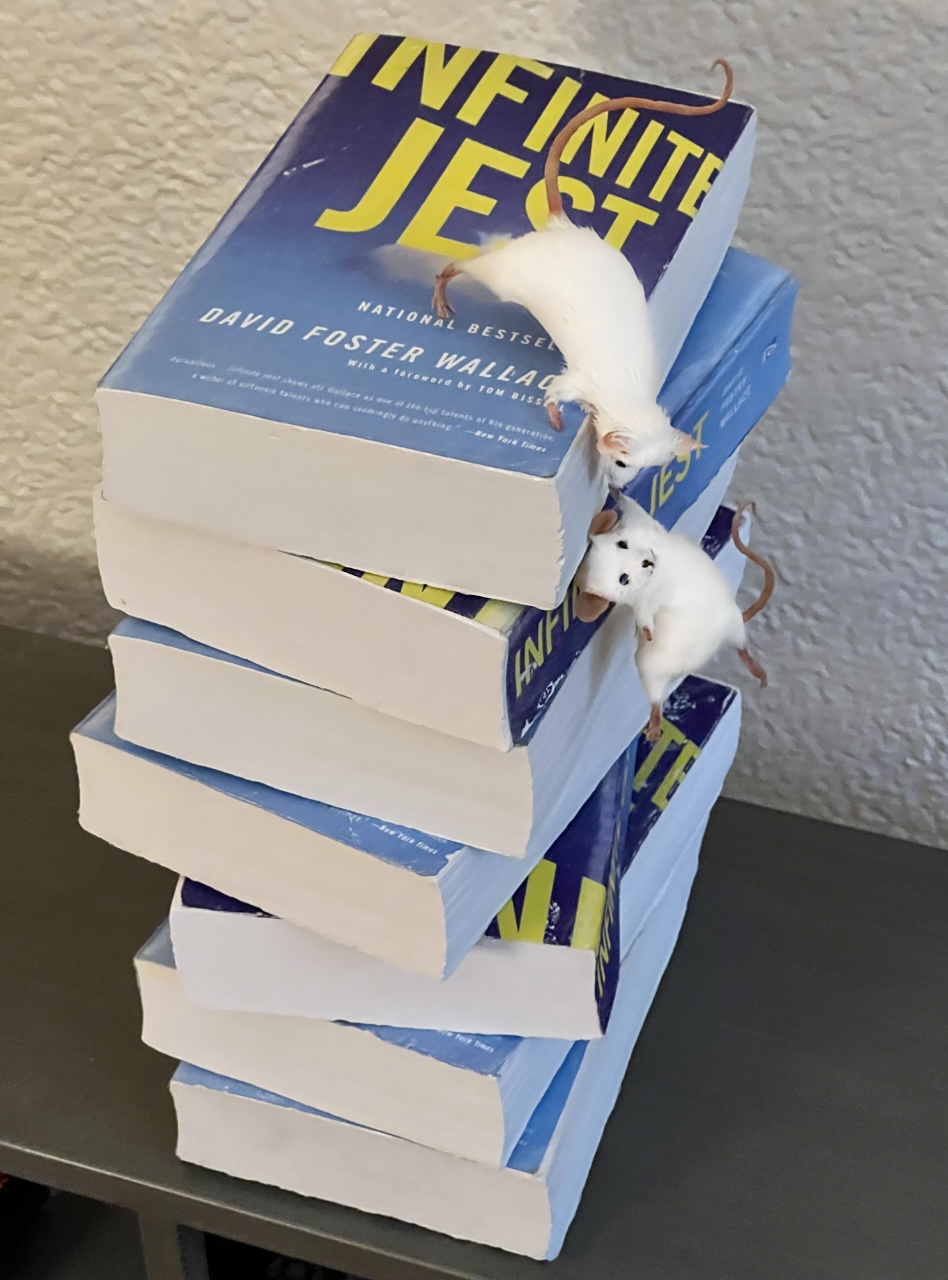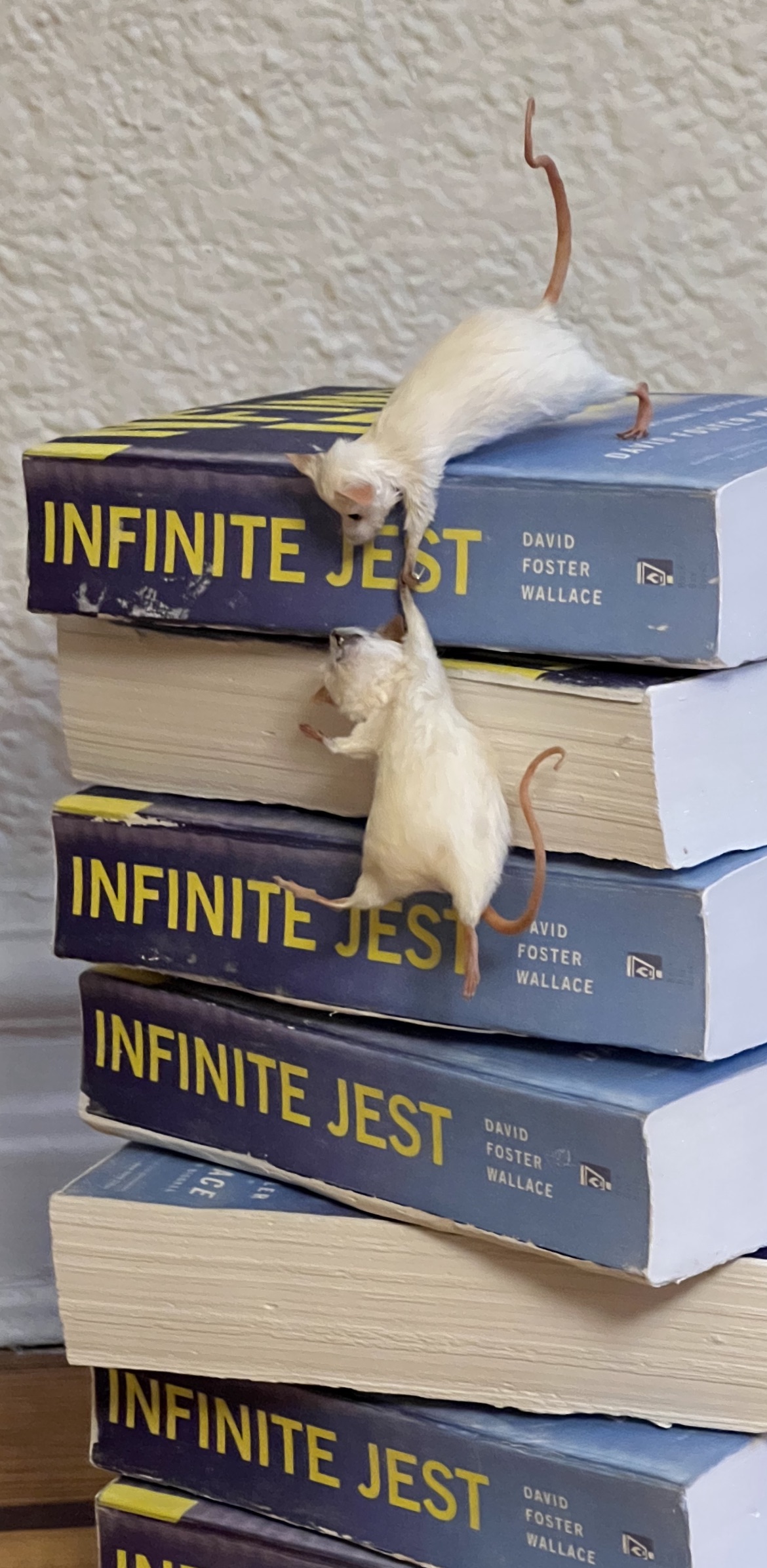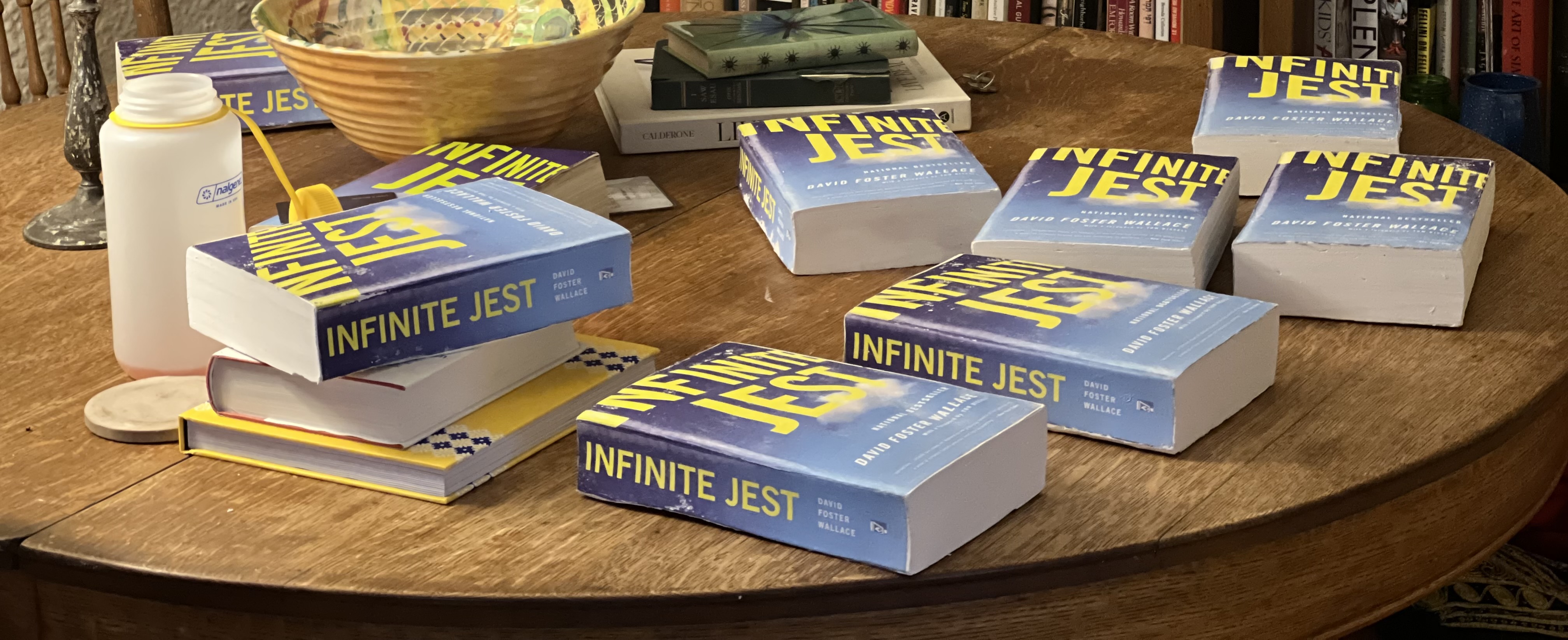Domestic Terrorism & How It Spreads (2022)




Hydrocal plaster, Xerox image transfer, taxidermied mice
Infinite Jest is widely known for the culture its readers have created around it. There is a superiority complex among those that have mustered the strength and focus to finish the 1996 novel, which is 1,079 pages including its infamous footnotes. While the culture surrounding David Foster Wallace’s work is what precedes it, the plot itself of Infinite Jest tells an eerily similar tale: That entertainment is an often dangerous force, a phenomenon to which people are compulsively drawn and which can even be used as a weapon. Just as having made your way through its pages becomes a rite of passage for the pseudo-intellectual.
This work is built from an open edition of cast hydrocal books. These books do not need to exist completely, page for page, as the act of having it on the shelf holds all the affect needed for its reader and his or her visitors. Entertainment for entertainment’s sake becomes destructive and meaningless, a sort of fool's journey. The folly of the mice is their attempt at summiting the heap of books. As the edition is open, the books are created per exhibition, while the mice travel together from space to space, climbing endlessly on new iterations.